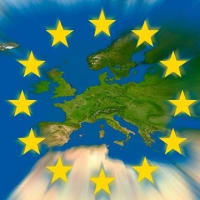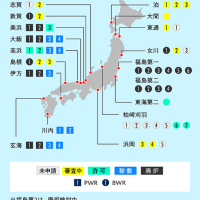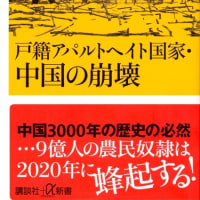2015-02-20 12:42:00 newscientist.com
Rise in wildfires may resurrect Chernobyl's radiation
http://www.newscientist.com/article/dn26933-rise-in-wildfires-may-resurrect-chernobyls-radiation.html#.VObGGoFKOK3

Forest fires in Ukraine could release Chernobyl radiation (Image: Reuters)
Fallout from the world's worst nuclear accident just won't go away. Radioactive clouds may once again spread over Europe, as rising fires release radiation locked up in the upper layers of soil in the dense forests near Chernobyl in Ukraine and Belarus
Forest fires there have already been re-distributing that radioactivity over Europe. But the situation is set to worsen with climate change, political instability – and a bizarre effect of radiation on dead leaves.
After a reactor at the Chernobyl nuclear plant exploded in 1986, people were evacuated from 4800 square kilometres of the most heavily contaminated areas in Ukraine and neighbouring Belarus. This "exclusion zone" became a haven for wildlife and a dense boreal forest.
Nikolaos Evangeliou at the Norwegian Institute for Air Research and colleagues have analysed the impact of forest fires in the region, and calculated their future frequency and intensity. To do so they fed satellite images of real fires in 2002, 2008 and 2010, and measurements of radioactive caesium-137 deposited on the area, to models of air movements and fires.
They estimate that of the 85 petabecquerels of radioactive caesium released by the Chernobyl accident, between 2 and 8 PBq still lurk in the upper layer of soil in the exclusion zone. In another ecosystem this might gradually fall with erosion or the removal of vegetation. But in these abandoned forests, says Evangeliou, "trees pick up the radioactive ions, then dead leaves return it to the soil".
Radioactive smoke
The team calculates that the three fires released from 2 to 8 per cent of the caesium, some 0.5 PBq, in smoke. This was distributed over eastern Europe, and detected as far south as Turkey and as far west as Italy and Scandinavia.
"The simulation probably underestimates the potential risks," says Ian Fairlie, former head of the UK government's radiation risk committee, who has studied the health impacts of Chernobyl. That's because the estimate depends on the half-life the team assumed for Cs-137, he says, and some investigators believe it is longer.
The team's calculated release would have given people in the nearby Ukrainian capital, Kiev, an average dose of 10 microsieverts of radiation – 1 per cent of the permitted yearly dose. "This is very small," says Tim Mousseau of the University of South Carolina at Columbia, a co-author of the study. "But these fires serve as a warning of where these contaminants can go. Should there be a larger fire, quite a bit more could end up on populated areas."
And the average dose isn't the problem. Some people will get much more, as fires dump radioactive strontium, plutonium and americium as well as caesium unevenly, and as some foods concentrate these heavy metals, for example caesium in mushrooms. "The internal dose from ingestion can be significant," says Mousseau. The resulting cancers might be hard to spot among many other less-exposed people. "But they will be very significant for those who experience them."
Increased forest fires seem likely. The area is due to get drier, according to the Intergovernmental Panel on Climate Change. The team found that droughts are already worsening forest fires in both area and intensity, and those are predicted to worsen.
This may be down to a range of factors, including lack of management of the forests. Most forests are managed by removing dead trees, clearing roads or cutting fire breaks but this isn't being done here. Moreover, dead vegetation that fuels fires is accumulating at a rate that has doubled since 1986, the team says.
Insect killer?
This is partly because the radiation itself seems to inhibit the decay of leaf litter, perhaps because it kills key insects or microorganisms. "We brought litter from an uncontaminated zone into a contaminated area and found it decayed only half as fast," says Evangeliou.
The models predict peaks of forest fires between 2023 and 2036. By 2060, fires might continue, but much of the radioactive fallout will have decayed away.
To cap it all, once a fire starts, local fire-fighters in Ukraine have seven times fewer crews and equipment per 1000 hectares than elsewhere in the country – a situation unlikely to improve given the ongoing conflict. The UN Environment Programme is installing video surveillance for fires, but much of the forest is inaccessible or slow to reach due to blocked roads. "It's like a jungle in there," says Evangeliou.
"This is clearly an important problem and one that applies also to Fukushima, where a significant amount of forest land has been contaminated," says Keith Baverstock of the University of Eastern Finland in Kuopio, formerly head of radiation protection at the World Health Organization's European office. "They have a very valid point. The lack of management of forests, the apparently slower decay of vegetation exposed to radiation, climate change leading to drought and the expansion of forested areas all contribute to increasing the risk of forest fire and therefore further dispersal of long-lived radioactive nuclides."
The actual amount of radioactivity redistributed by the recent fires is about a tenth of what was deposited on Europe in 1986, and its health effects are still a matter of debate among epidemiologists. But long-lived emitters of radioactivity persist and accumulate, so any dose is bad news, says Mousseau. "A growing body of information supports the idea that there is no threshold below which they have no effect."
Journal reference: Ecological Monographs, DOI: 10.1890/14-1227.1
2015-02-20 12:42:00 newscientist.com
チェルノブイリ事故から29年:
/ニュー・サイエンティスト誌(2月9日)
1986年4月にチェルノブイリで起きた史上最悪の原発事故によって放出された死の灰は簡単には消えない。ウクライナとベラルーシをまたぐチェルノブイリ近辺の深い森の中の土の表面近くに今も残る放射性物質は、頻発する野火によって空中に放出され続けており、今後放射性の雲となってヨーロッパの上空を再び覆う可能性がある。ノルウェー大気研究所のニコラオス・エバンゲリオウ氏が率いる研究チームが発表した。
チェルノブイリの野火(イメージ)/ロイター
◆森の土壌に蓄積する放射能
エバンゲリオウ氏らはチェルノブイリ近辺における野火が2002年以降にもたらした影響を分析、同地域の汚染レベルを考慮した上で将来起きうる新たな野火の頻度とその影響規模を予測した。エバンゲリオウ氏によると森の中の地表近くの土壌には、現在も高い濃度で放射性物質が残留している。土壌中の放射性物質の濃度は通常、徐々に土が流されたり植物とともに土から引き抜かれることにより低下する。しかし人の出入りが途切れた深い森の中では、樹木が放射性物質を吸収し枯葉として放出した後、汚染はそのまま高い濃度で土壌に残留する。
エバンゲリオウ氏の指摘によれば、放射能による被害により虫や微生物が殺され減少したために、枯れ葉の腐食には通常以上に時間がかかっていると見られ、チェルノブイリ近辺の立ち入り禁止区域では森の手入れをする人がいないことと相まって土壌の放射性物質濃度を上昇させている。過去にWHOヨーロッパ事務所で放射線防護課の代表を務め、現在は東フィンランド大学で教えるキース・バヴェストックは同様の問題が福島にも起きうることを指摘する。
◆ヨーロッパ全土を覆う煙
野火は以前から続いており、既に多くの放射性物質がヨーロッパ全土に放出された。現在、野火によって煙の形で放出されている放射性セシウムはチェルノブイリ原発事故が起きた1986年に放出された量の約10分の1にあたり、近辺に残留しているセシウムの2~8%に相当する。煙はヨーロッパの東部一帯に放出され、遠くトルコやイタリア、北欧諸国にまで到達している。更には近年の気候変動で野火の発生が増加しており、ウクライナ近辺の不安定な政治状況によって野火の消火を担当する消防団の人員が手薄になっている。
あなたは野火によって空中に放出される放射性物質の量などそれほどの量では無い、と思うかもしれない。エバンゲリオウ氏らの研究チームがチェルノブイリから近いウクライナの首都キエフで想定したところ、空気中の放射性物質濃度は平均で10マイクロシーベルトにとどまっていた。年間被ばく量の上限の1%である。
しかし米国サウス・キャロライナ大学のティム・ムッソー氏によれば、被ばくのリスクは放出された汚染物質がどこへ行くかによって決まる。野火の勢いが強まればより多くの放射性物質が放出される危険がある。汚染の平均値は問題では無い。野火でストロンチウムやプルトニウム、アメリシウム等の放射性物質が放出された際に、これを浴びたり、汚染物質が凝縮されたキノコを食べた場合には、これら特定の人たちが重度の汚染にさらされる。一度口から入った放射性物質は深刻な内部被ばくを引き起こす。このように被ばくは特定の人に集中して発生する傾向がある。他方、広い地域に広がる煙を通じてまき散らされた放射能による癌の発生を証明することは困難となる。ムッソー氏は言う。
「どんな少量の被ばく量であっても、人体に何の影響も与えないということはありません。安全な被ばく量、しきい値というものは無いのです。」
(abridged translation and partly edited)
http://www.newscientist.com/article/dn26933-rise-in-wildfires-may-resurrect-chernobyls-radiation.html#.VObGGoFKOK3




















※コメント投稿者のブログIDはブログ作成者のみに通知されます